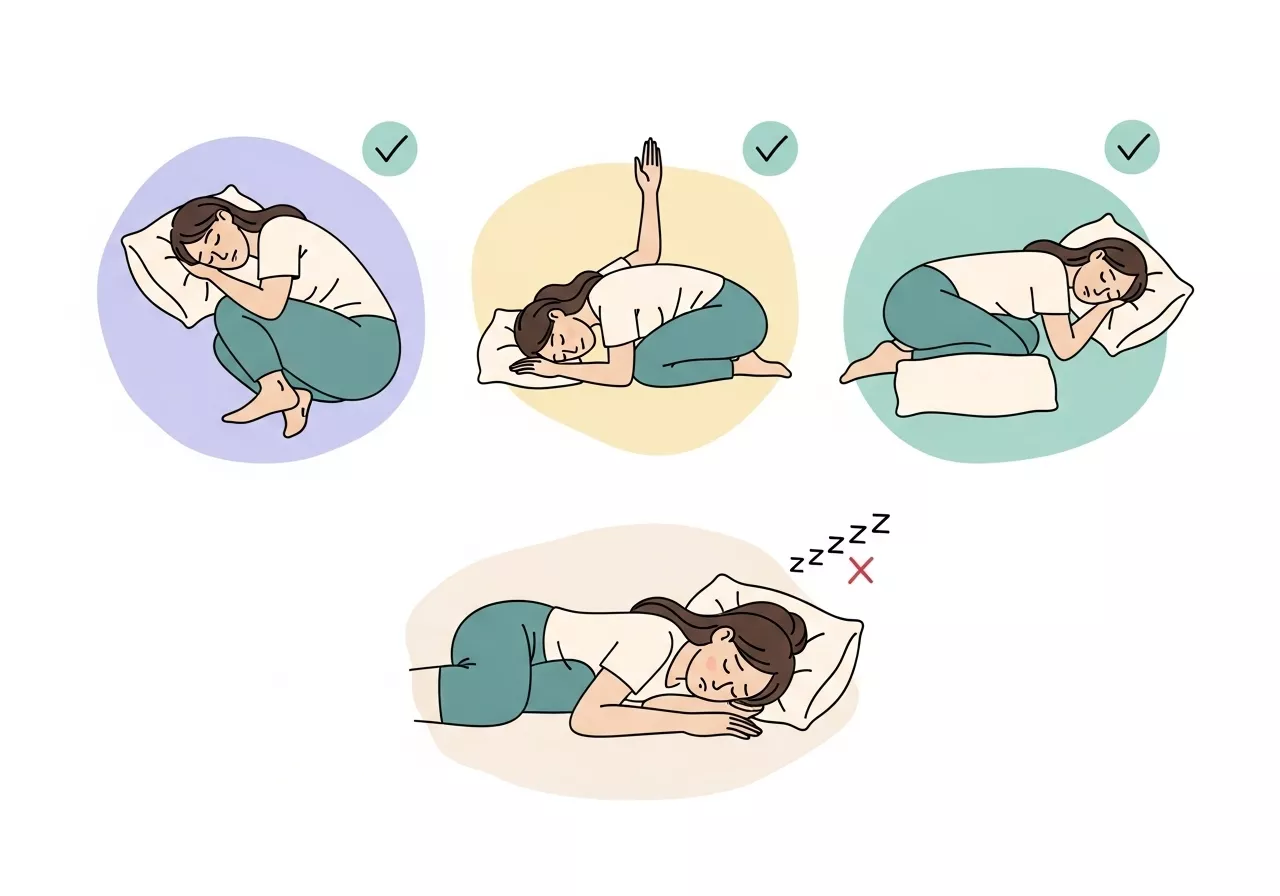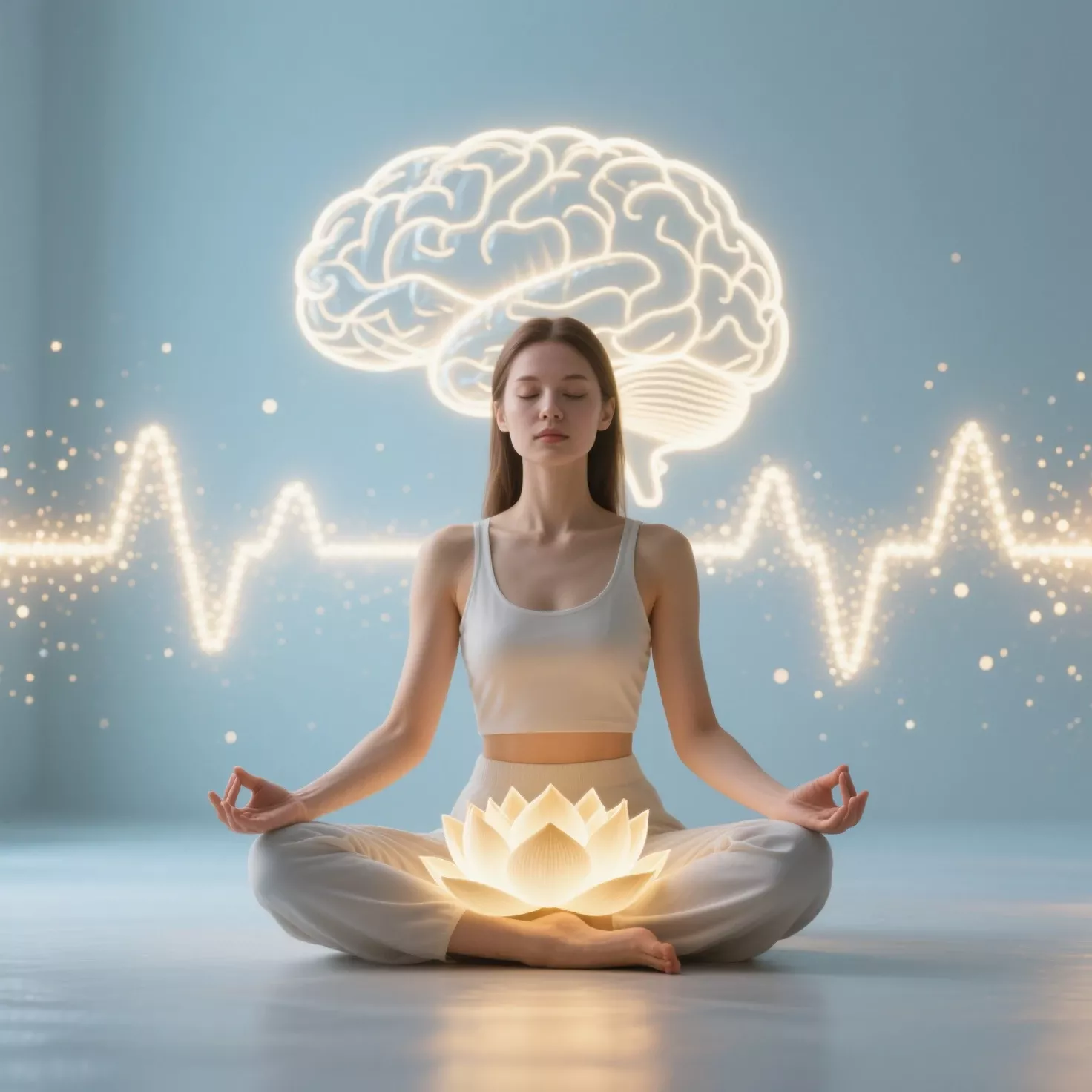Yoga Nidra, often referred to as “yogic sleep,” is a deeply restorative practice that guides individuals into a state of relaxation while maintaining conscious awareness.
This state lies between wakefulness and sleep, making it a powerful tool for relaxation and mental clarity.
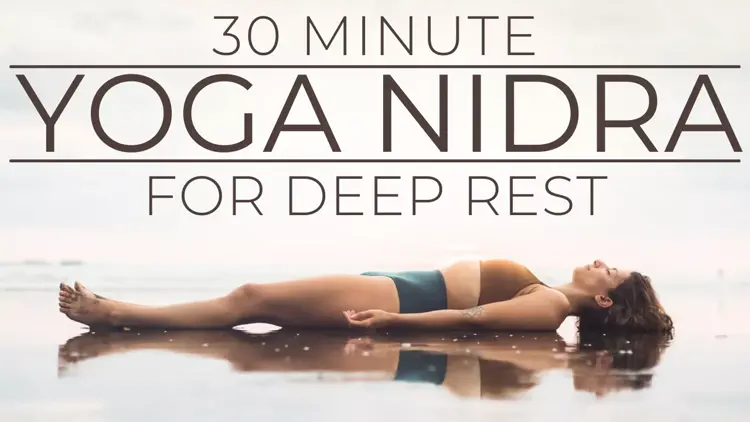
The practice typically involves a guided meditation that leads participants through various stages of awareness, helping them disengage from the stress and tension of daily life.
What is Yoga Nidra?
Yoga Nidra is more than a simple relaxation technique; it’s a systematic practice rooted in ancient yogic traditions.
Modern Yoga Nidra was formalized by Swami Satyananda Saraswati, who designed it as a series of steps to induce profound relaxation. These steps usually include:
- Settling the Body: Relaxing into a comfortable lying position, often in savasana (corpse pose).
- Setting an Intention (Sankalpa): Mentally stating a positive affirmation or goal.
- Rotation of Consciousness: Bringing awareness to different parts of the body in sequence.
- Breath Awareness: Observing the natural rhythm of breathing.
- Visualization: Engaging the mind in guided imagery to encourage emotional release and mental clarity.
Each of these stages is designed to draw the practitioner deeper into relaxation, allowing the body and mind to unwind completely.
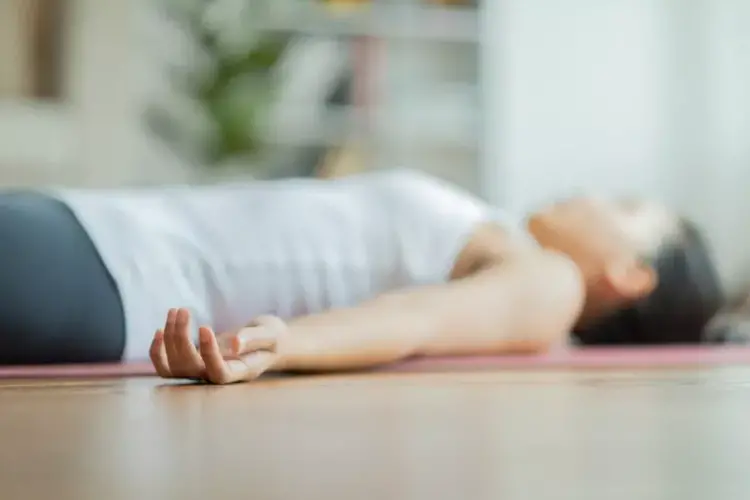
Benefits of Yoga Nidra
Yoga Nidra has been scientifically shown to offer a wide range of benefits for physical, mental, and emotional well-being:
- Stress Reduction: By promoting relaxation, Yoga Nidra helps lower cortisol levels, the hormone associated with stress.
- Improved Sleep Quality: Regular practice can enhance both the duration and quality of sleep, making it an effective tool for managing insomnia.
- Emotional Regulation: The practice fosters a sense of emotional balance, reducing feelings of anxiety and depression.
- Enhanced Focus and Creativity: By calming the mind, it opens the door to greater mental clarity and creativity.
- Physical Healing: Deep relaxation aids the body’s natural healing processes, improving overall health.
Scientific Backing
Studies have highlighted the effectiveness of Yoga Nidra in improving sleep and managing stress. For instance:
- A 2017 study led by Dr. Datta found Yoga Nidra significantly improved sleep patterns in individuals with chronic insomnia.
- Research conducted in 2022 observed that athletes practicing Yoga Nidra experienced reduced sleep latency and improved recovery, showing its versatility across various populations.
How to Incorporate Yoga Nidra
Incorporating Yoga Nidra into your daily routine is simple and requires no special equipment.
Set aside 20–45 minutes in a quiet, comfortable space, and use a guided meditation track or join a class.
With consistent practice, many people find that Yoga Nidra becomes a cornerstone of their self-care regimen.
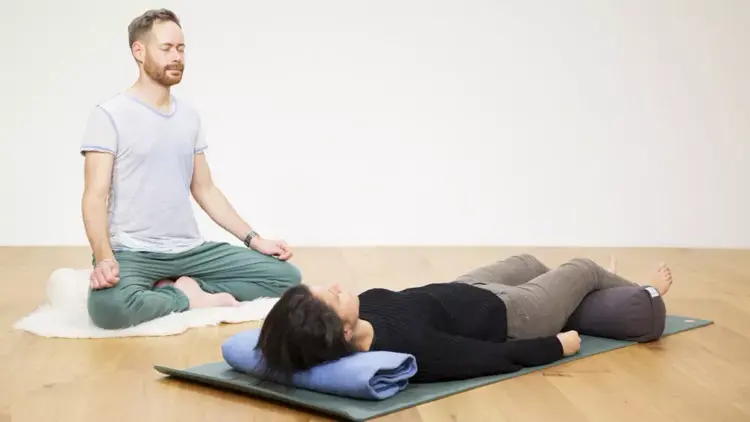
Best Yoga Nidra Practices for Sleep and Anxiety
Yoga Nidra is an exceptional tool for improving sleep quality and managing anxiety, as it promotes deep relaxation while calming the nervous system.
To maximize its benefits, selecting practices tailored to your needs and preferences is essential.
Below are the best Yoga Nidra techniques and guided sessions for sleep and anxiety:
1. Yoga Nidra for Sleep
If you struggle with falling asleep or staying asleep, Yoga Nidra can help by quieting the mind and relaxing the body.
These practices focus on guiding the practitioner into a state of restfulness, making it easier to transition to sleep naturally.
Key Features of Sleep-Focused Yoga Nidra:
- Short Relaxation Sequence: These sessions typically last 20–30 minutes, making them easy to incorporate before bed.
- Breath Awareness: Gentle focus on the breath helps release tension and encourage calmness.
- Body Scan Technique: Guides you through systematically relaxing each body part, preparing your body for sleep.
- Soothing Visualizations: Images of tranquil scenes like a peaceful beach or a quiet forest aid mental relaxation.
Recommended Guided Yoga Nidra Sessions:
- Insight Timer: Offers a range of free, sleep-oriented Yoga Nidra tracks by renowned teachers like Jennifer Piercy.
- Calm App: Includes dedicated Yoga Nidra programs designed to enhance sleep.
- YouTube Channels: Check out teachers like Ally Boothroyd or Tracy Stanley for accessible guided sessions.
2. Yoga Nidra for Anxiety
For those grappling with anxiety, Yoga Nidra helps by calming the overactive mind and reducing physiological stress markers like a racing heart or shallow breathing.
These sessions emphasize grounding, mindfulness, and emotional balance.
Key Features of Anxiety-Focused Yoga Nidra:
- Sankalpa (Positive Intentions): Affirmations such as “I am calm and at ease” or “I am safe and supported” help rewire negative thought patterns.
- Grounding Techniques: Awareness of body sensations and connection to the earth creates a sense of stability and safety.
- Longer Relaxation Practices: Sessions ranging from 30–60 minutes provide enough time to unwind deeply.
- Visualization for Emotional Healing: Gentle imagery helps process and release stored emotions that may be causing anxiety.
Recommended Resources for Anxiety-Relief Yoga Nidra:
- iRest Yoga Nidra by Dr. Richard Miller: Offers scientifically-backed methods for reducing anxiety and building resilience.
- Apps like Headspace or Insight Timer: Look for anxiety-specific Yoga Nidra meditations.
- Podcasts and Audiobooks: Resources like “Yoga Nidra Scripts for Relaxation and Stress Relief” provide guided practices tailored to anxiety management.
3. Combination Practices for Sleep and Anxiety
Certain Yoga Nidra routines address both sleep and anxiety by combining techniques that soothe the mind and body simultaneously.
These routines often begin with grounding exercises for emotional balance and transition to relaxation methods that ease you into sleep.
Key Elements of Combination Practices:
- Breathwork for Stress Reduction: Simple breathing exercises like alternate nostril breathing or extended exhalations.
- Mindful Awareness: Observing thoughts without judgment to quiet mental chatter.
- Progressive Muscle Relaxation: Contracting and releasing muscles to eliminate tension.
Top Recommendations:
- Tracy Stanley’s “Radiant Rest”: A guide combining ancient techniques with modern needs.
- Yoga Nidra Online Courses: Platforms like Yoga International often feature expert-led programs addressing multiple concerns.
Tips for Effective Practice
- Create a Relaxing Environment: Use dim lighting, a comfortable mat, or a blanket to ensure physical comfort.
- Consistency Matters: Practice regularly at the same time each day for lasting benefits.
- Be Patient: It may take time to experience significant changes, so approach the practice with an open mind and no expectations.
By choosing the right Yoga Nidra practice and integrating it into your routine, you can address sleep disturbances and anxiety effectively, creating a foundation for overall well-being.
Best Yoga Nidra Poses for Sleep and Anxiety
The effectiveness of Yoga Nidra is enhanced when practiced in positions that promote relaxation, comfort, and stability.
While the practice itself is primarily mental, the physical posture you choose plays a crucial role in supporting the body’s ability to release tension and stress.
Below are the best poses for Yoga Nidra, tailored for sleep and anxiety:
1. Savasana (Corpse Pose)
Why It’s Effective: Savasana is the classic Yoga Nidra posture because it allows the entire body to rest completely.
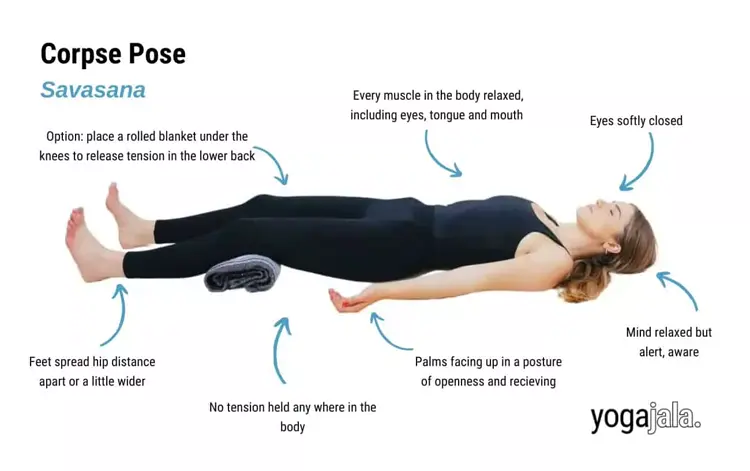
It promotes stillness and helps signal to your nervous system that it’s time to relax.
How to Do It:
- Lie flat on your back on a comfortable surface, such as a yoga mat or bed.
- Place your arms slightly away from your body with palms facing upward.
- Let your legs fall open naturally, keeping your feet relaxed.
- Support your head, neck, and knees with cushions or bolsters if needed for comfort.
- Close your eyes and focus on your breath.
Best For: People who need full-body relaxation to combat sleep difficulties and generalized anxiety.
Tips:
- Use an eye pillow or cover your eyes with a cloth to block out light.
- Ensure the room is warm, or cover yourself with a blanket.
2. Side-Lying Pose
Why It’s Effective: This pose is excellent for those who find lying flat uncomfortable due to back pain, pregnancy, or other conditions.
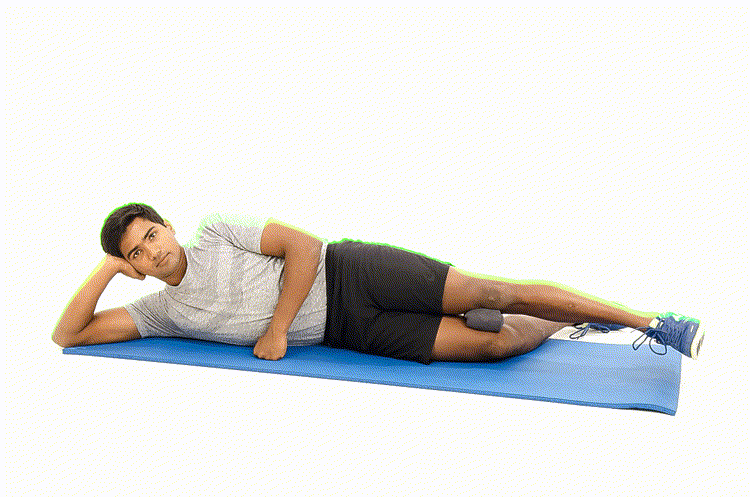
It’s a nurturing position that feels safe and grounding, reducing anxiety.
How to Do It:
- Lie on your side with your legs slightly bent and stacked comfortably.
- Place a pillow under your head for support.
- Use a bolster or pillow between your knees for added comfort.
- Rest your bottom arm under your head or along your body, and place your top arm on the bed or mat.
Best For: Pregnant individuals or those with physical discomfort that prevents lying on their back.
Tips:
- Choose the side that feels most comfortable.
- Use additional cushions to fully support your torso and hips.
3. Reclined Butterfly Pose (Supta Baddha Konasana)
Why It’s Effective: This pose gently opens the hips and chest, encouraging a sense of ease and relaxation.
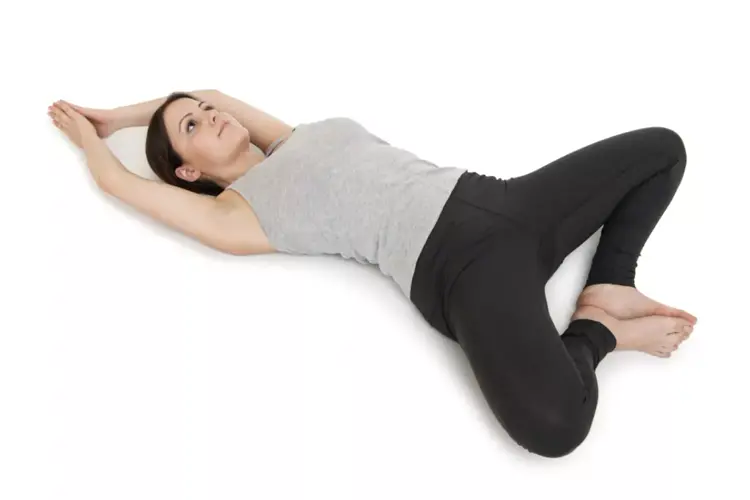
It’s particularly helpful for releasing tension stored in the pelvis and lower abdomen, areas commonly affected by anxiety.
How to Do It:
- Lie on your back with your knees bent and the soles of your feet together.
- Allow your knees to fall open, forming a diamond shape with your legs.
- Support your knees with blocks or cushions to avoid strain.
- Rest your arms at your sides, palms facing up.
Best For: Those looking to release emotional tension while preparing for deep relaxation.
Tips:
- Use a bolster under your back for additional support if desired.
- Adjust the distance of your feet from your pelvis for maximum comfort.
4. Legs-Up-the-Wall Pose (Viparita Karani)
Why It’s Effective: This pose reduces stress and promotes circulation, making it ideal for calming the mind and body.
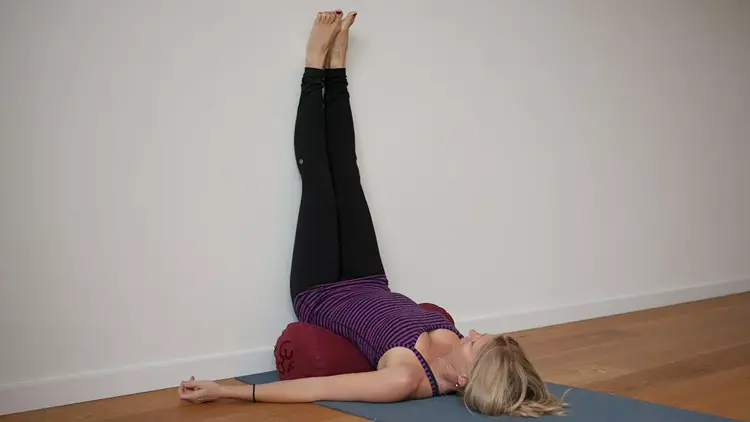
It’s particularly beneficial for those who feel physically or mentally fatigued.
How to Do It:
- Sit sideways against a wall, then lie back as you swing your legs up the wall.
- Adjust your position so your hips are close to the wall but comfortable.
- Rest your arms at your sides or place your hands on your abdomen to focus on your breath.
Best For: Relieving anxiety and physical exhaustion, especially after a long day.
Tips:
- Use a folded blanket under your hips for added comfort.
- Practice this pose for 5–10 minutes before transitioning to Savasana.
5. Supported Reclining Pose (Using Bolsters or Cushions)
Why It’s Effective: This pose combines the restorative benefits of reclined poses with additional support to ensure maximum comfort, making it suitable for both anxiety relief and sleep preparation.
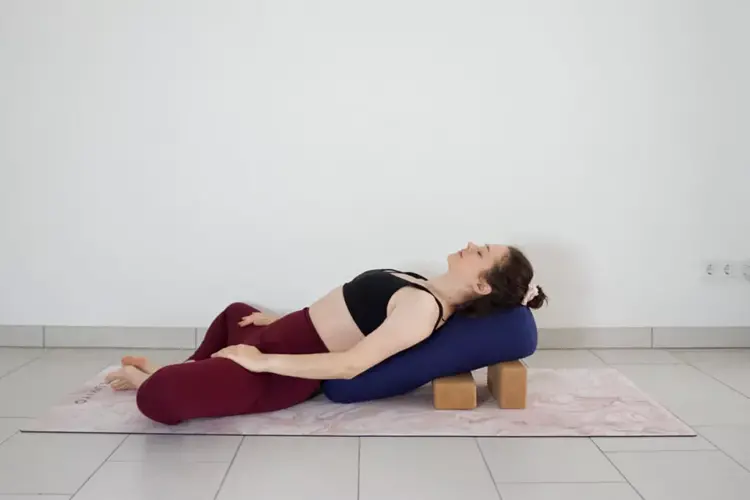
How to Do It:
- Place a bolster or stacked pillows under your back to create a gentle incline.
- Lie back and let your arms rest at your sides.
- Extend your legs or keep them bent, supported by a cushion under your knees.
Best For: Deep relaxation with added support, especially for those with tight muscles or limited flexibility.
Tips:
- Adjust the height of the bolster for your preferred level of support.
- Focus on slow, deep breaths to deepen the relaxation.
Additional Considerations
- Personal Comfort: Always choose a pose that feels comfortable and sustainable for the duration of your Yoga Nidra practice.
- Environment: Set up a calming space with dim lighting, soft music, or aromatherapy to enhance the experience.
- Transitioning: After completing your Yoga Nidra session, take your time transitioning out of the pose to maintain the sense of calm.
Incorporating these poses into your Yoga Nidra practice can help optimize its benefits for both sleep and anxiety relief.

